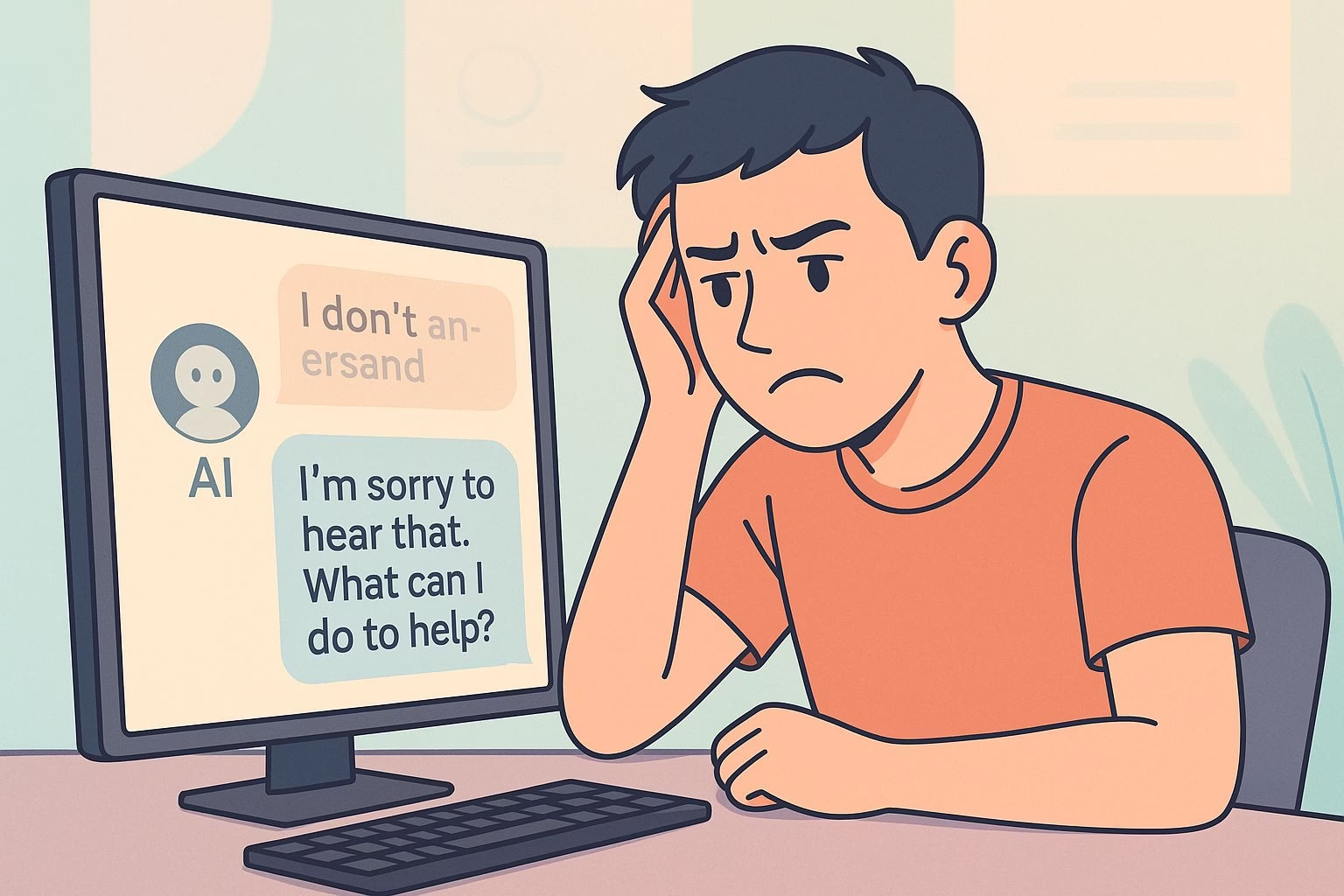How to Stop Character AI from Writing as Your Persona
One of the most frustrating things in Character AI?
You write a message—carefully, in character—and the bot replies like it’s you.
Not just talking to you, but literally writing as if it is your persona. Mimicking your style. Reacting the way you would. Finishing your thoughts. And worst of all, making it feel like a one-person play.
You didn’t ask for this. You never described how the bot should react. You’re just trying to roleplay or have a creative exchange, and suddenly it feels like the AI is hijacking your character.
It’s a common problem. And once it starts, it’s hard to unsee. The replies blur the line between your character and the bot’s, killing immersion and draining the fun out of it.
So, how does this even happen? Why does the AI suddenly start acting like your persona? And is there anything you can actually do about it?
Let’s unpack that.
What Causes This “Persona Hijacking”?
This issue usually creeps in over time. The more you write, especially long and expressive replies, the more likely the AI is to start “mirroring” your behavior. But it’s not random. There’s a deeper problem in how Character AI bots are created.
Here’s what likely triggers it:
-
Bad example messages from the bot creator
Most bots are built using sample dialogues that define how they should speak. The problem? Many creators blend user and bot behaviors incorrectly.
Example:That response includes actions or reactions the user never specified—like waving. When bots are trained on examples like this, they start guessing or inventing what the user is doing. Over time, the bot may begin writing as the user, not just to them.
-
Your own writing style: If you write long, expressive messages, the bot sometimes picks up patterns and styles from your text. It assumes your voice is part of the shared narrative tone. That’s not a bug—it’s how many LLMs are designed to generate cohesive back-and-forths. But in this context, it breaks immersion.
-
No clear role boundaries
Without strict separation between user and bot actions in the training examples, the AI loses track of who’s supposed to be doing what.
This isn’t always noticeable right away. But after several messages, the lines blur, and your carefully crafted character starts showing up in the bot’s replies.
What You Can Actually Do About It
Unfortunately, there’s no one-click fix. But users have tested several workarounds, and some of them work better than others, depending on how persistent the bot is.
Here’s what’s been found helpful:
-
Edit the offending replies
One of the most effective tricks: manually delete the parts where the bot starts acting as your character. Do it a few times consistently, and the bot might “learn” to stop including them. It doesn’t always work instantly, but many say it helps over multiple edits. -
Rate responses 1-star and explain why
Just swiping away isn’t enough. When you hit 1 star and include a reason, like “Bot is replying as me instead of itself,” that feedback goes into the system. It doesn’t change the bot’s behavior immediately, but it helps refine responses over time across the platform. -
Swipe persistently
Some users have to swipe 5, 10, even 15 times before getting a clean reply. It’s annoying, but it can sometimes filter out the ones that cross the persona line. -
Rebuild or tweak the bot yourself
If you’re the one who made the bot (or you’re editing a fork), make sure the example messages don’t include any behavior or dialogue that the user didn’t explicitly write. Keep {{user}} bland and short. Let {{char}} shine without trying to predict or narrate the user’s actions.
Why Swiping Alone Doesn’t Really Fix It
It feels quick. You swipe left and move on.
But for this specific problem, where the bot starts responding like it is you, swiping is a weak fix. Here’s why:
-
Swiping gives zero context
If you don’t leave feedback, the system has no idea why you rejected the reply. Was it too short? Off-topic? Was the bot acting like your persona again? No one knows. -
It’s not training the bot—just filtering options
Swiping only cycles through pre-generated responses. It doesn’t teach the bot to avoid a specific mistake in the future. You’re not updating its memory or behavior. -
You’re relying on luck
Each swipe is just hoping the next version behaves better. That’s not a sustainable solution, especially when the issue is baked into the bot’s example messages or prompt history.
If you want real change, you have to go beyond swiping. That means editing, leaving ratings, or updating how the bot is built.
The Hidden Role of Example Messages
Most people don’t realize how powerful example messages are.
They’re not just filler. They shape the entire personality and behavior of the bot.
If the example dialogue includes things like:
-
{{char}} describing what {{user}} is doing
-
{{char}} reacting to imagined user actions
-
{{char}} initiating thoughts or feelings on behalf of {{user}}
Then the AI will likely start doing the same in real conversations.
Why? Because the language model treats those examples as “how the conversation should flow.” If {{char}} acts like {{user}}, the bot thinks that’s part of the structure.
To prevent this, bot creators need to:
-
Keep {{user}} messages short, minimal, and neutral
-
Never include user actions or emotions unless the real user says them
-
Avoid narration that jumps into {{user}}’s perspective
If you’re not the bot creator, you can’t fix the original examples—but now you know why it keeps happening.
Long-Term vs Short-Term Fixes
If you’re looking for quick relief, editing out the bot’s overreach and swiping persistently are your best bets. But if you want to fix this in a lasting way, you need to dig deeper.
Short-term fixes:
-
Swipe until you find a decent reply
-
Edit the bot’s message to remove your persona’s parts
-
Downvote the bad ones with a clear reason
Long-term fixes:
-
Fork the bot and rebuild its example messages properly
-
Use minimal user input in training prompts
-
Focus on strict role separation in formatting
Most bots out there were never designed with these issues in mind. They weren’t tested against deep roleplay or longform writing. They just sort of work—until they don’t.
If you care about immersion, it might be worth creating your own version of the bot with corrected examples. That’s the only real way to force the AI to stop trying to write your character for you.
A Worthwhile Alternative?
While you’re dealing with all this—there’s something else worth mentioning.
If you’re getting fed up with Character AI’s quirks, you might want to check out Candy AI. It lets you design bots without those rigid example-message systems, and you don’t get punished for writing long, expressive messages.
The responses stay on track, and the AI doesn’t randomly switch roles mid-chat. It’s not flawless, but it’s a breath of fresh air when you’re tired of role confusion.

